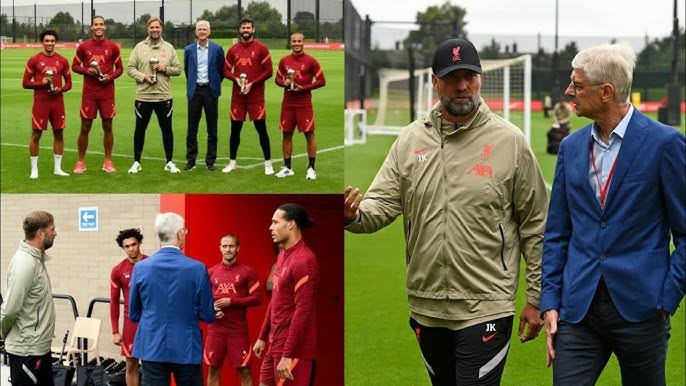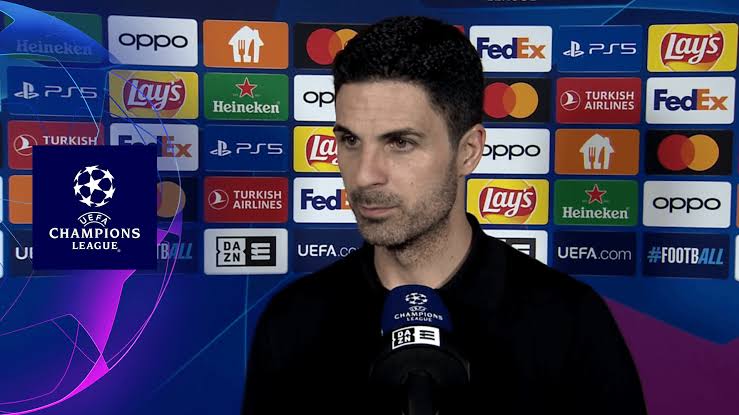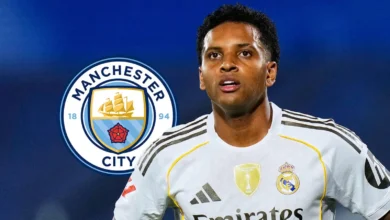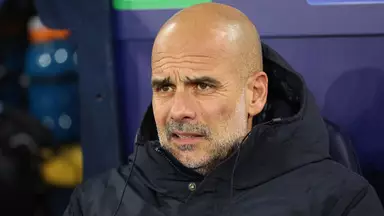Liverpool’s blindingly obvious flaws will give Arne Slot sleepless nights

When Arne Slot walked through the doors at Anfield as Liverpool’s new manager, he inherited more than just a football club – he inherited a legacy, a philosophy, and the enormous expectation that comes with following in the footsteps of Jürgen Klopp. The Dutch tactician’s appointment marked a significant shift in Liverpool’s strategic thinking, moving from the high-octane emotional intensity of the German’s gegenpressing to a more calculated, possession-based approach that reflects Slot’s own footballing philosophy developed during his successful tenure at Feyenoord.
Slot’s tactical approach is fundamentally rooted in Dutch footballing traditions, drawing inspiration from the Total Football concepts while adapting them for modern football’s demands. His system prioritizes positional play, structured build-up, and intelligent pressing over the relentless physicality that characterized Klopp’s Liverpool. This represents a paradigm shift that requires not just new players, but a complete recalibration of how Liverpool approaches both offensive and defensive phases of play.
The core principles of Slot’s system center around maintaining possession with purpose, creating numerical superiority in key areas of the pitch, and utilizing positional flexibility to exploit defensive weaknesses. Unlike Klopp’s vertical, direct approach, Slot prefers to patiently probe defenses, drawing opponents out of position before delivering the decisive blow. This methodical approach requires players with exceptional technical ability and tactical intelligence – qualities that have driven Liverpool’s recent recruitment strategy.
While Liverpool maintained their familiar 4-3-3 shape under Klopp, Slot’s interpretation of this formation is markedly different. The Dutch manager has implemented what could be described as a fluid 4-3-3/4-2-3-1 hybrid, where player roles shift dramatically based on the phase of play and opposition positioning.
In possession, Slot’s Liverpool operates with a much higher degree of positional rotation. The full-backs don’t simply bomb forward as overlapping threats; instead, they intelligently time their runs to create overloads while ensuring defensive stability. The midfield trio functions as a dynamic unit where one player drops deep to facilitate build-up play, another pushes forward to link with the attackers, and the third maintains positional discipline to screen the defense.
The front three under Slot’s guidance operates with greater fluidity than Klopp’s more rigid attacking structure. Rather than maintaining strict left-wing, center-forward, and right-wing positions, Slot encourages constant interchange, creating confusion for opposing defenses while maintaining attacking threat from multiple angles. This approach has been particularly evident in how new signings like Florian Wirtz and Hugo Ekitike have been integrated into the system.
One of the most significant departures from Klopp’s approach lies in Liverpool’s pressing strategy. While the German manager’s gegenpressing was characterized by immediate, aggressive pressure following possession loss, Slot has implemented a more calculated pressing system that prioritizes timing and positioning over raw intensity.
Slot’s pressing triggers are situation-specific rather than automatic. His Liverpool identifies specific moments – such as poor first touches, backwards passes, or when opponents are forced wide – to initiate coordinated pressing sequences. This approach conserves energy while maximizing effectiveness, allowing Liverpool to maintain their pressing intensity throughout the 90 minutes rather than experiencing the inevitable drops in intensity that sometimes affected Klopp’s sides.
The Dutch manager has also introduced the concept of “pressing traps,” where Liverpool deliberately allows opponents to play into certain areas of the pitch before springing coordinated pressure. This requires exceptional discipline and communication from all eleven players, as mistimed pressing can leave dangerous gaps in Liverpool’s defensive structure.
Slot’s approach to build-up play represents perhaps the most dramatic shift from Klopp’s Liverpool. Where the German manager often favored quick, direct transitions, Slot has implemented a patient, methodical approach to progressing the ball from defense to attack.
The Dutch manager utilizes his goalkeeper and center-backs as key figures in the initial phases of build-up play. Alisson’s distribution, always impressive, has become even more crucial under Slot’s system, with the Brazilian goalkeeper often initiating attacking sequences with precise long passes that bypass opposition pressing lines.
The center-back pairing has been coached to split wide during build-up phases, creating space for the defensive midfielder to drop deep and receive possession. This creates numerical superiority in the defensive third while drawing opposition forwards out of position, opening channels for progressive passes into midfield areas.
Liverpool’s midfield structure under Slot is designed to create multiple passing options at all times. The three midfielders rarely occupy the same horizontal line, instead creating triangular passing angles that allow for quick combination play and forward progression. This approach requires players with excellent first touches and decision-making abilities – qualities that have influenced Liverpool’s transfer targeting.l
Slot’s attacking approach emphasizes width creation and central creativity in equal measure. The Dutch manager has restructured Liverpool’s attacking patterns to better utilize the flanks while maintaining a strong central presence capable of unlocking stubborn defenses.
The full-backs under Slot’s system are given specific instructions regarding their attacking contributions. Rather than constantly overlapping, they are coached to identify optimal moments for forward runs while ensuring defensive balance is maintained. This calculated approach to full-back deployment has allowed Liverpool to maintain attacking threat while reducing defensive vulnerability on the counter-attack.
Central creativity has been enhanced through Slot’s emphasis on positional interchange among the front four players (including the attacking midfielder). Players like Wirtz have been given license to drift across the attacking third, creating numerical overloads in different areas while maintaining the ability to quickly shift the point of attack.
The Dutch manager has also implemented specific patterns of play designed to create high-quality scoring opportunities. These include coordinated runs from deep-lying midfielders, overlapping movements from wide players, and intricate passing combinations in the final third. The success of these patterns depends heavily on precise timing and execution – areas where Slot’s coaching methodology excels.
Slot’s defensive approach prioritizes organization and positioning over aggressive individual defending. The Dutch manager has implemented a zonal marking system that emphasizes collective responsibility while maintaining individual accountability.
The defensive line under Slot operates as a cohesive unit, with specific triggers for stepping up, dropping back, or shifting laterally. Center-backs are coached to communicate constantly, ensuring that gaps between defenders are minimized and opposition attackers are denied space between the lines.
Midfield defensive responsibilities have been clearly defined, with each player understanding their role in different defensive scenarios. The defensive midfielder serves as the primary shield for the back four, while the more advanced midfielders have specific pressing responsibilities designed to force opposition play into less dangerous areas.
Slot has also implemented specific defensive transitions designed to quickly reorganize the team following possession loss. Rather than immediately pressing for ball recovery, Liverpool under Slot often prioritizes getting behind the ball and forcing opponents into less dangerous areas before initiating pressure.
One of Slot’s greatest challenges has been integrating new tactical concepts with established players who excelled under Klopp’s system. Players like Virgil van Dijk and Mohamed Salah have had to adapt their games to fit Slot’s more patient, possession-oriented approach.
The Dutch manager has handled this transition carefully, gradually implementing new concepts while maintaining elements that suit his inherited squad. This balanced approach has helped minimize disruption while allowing for tactical evolution.
However, certain players have struggled with the transition. The more calculated approach requires different mental attributes, and some players who thrived in Klopp’s high-energy system have found it challenging to adapt to Slot’s more methodical demands.
Slot’s influence on Liverpool’s transfer strategy has been immediately apparent. The signings of Wirtz and Ekitike reflect the manager’s preference for technically gifted players capable of operating in multiple positions while maintaining high tactical intelligence.
These recruitments suggest a long-term vision that prioritizes tactical flexibility over specialized roles. Slot appears to be building a squad capable of adapting to different tactical approaches within games, allowing Liverpool to respond to various opposition strategies without making wholesale changes.
The emphasis on younger players also reflects Slot’s coaching philosophy, which focuses on developing tactical understanding over time. The Dutch manager has historically shown patience with player development, preferring to gradually integrate new concepts rather than demanding immediate tactical perfection.
While it’s still early in Slot’s tenure, certain trends are already emerging. Liverpool’s possession statistics have improved, suggesting greater control over games. However, this has come at the cost of some attacking directness, with Liverpool creating fewer clear-cut chances per game compared to Klopp’s final seasons.
Defensively, Liverpool has shown greater organization in their defensive shape, but the reduced pressing intensity has occasionally allowed opponents more time on the ball. This trade-off reflects Slot’s belief that sustainable success comes through tactical consistency rather than emotional peaks.
The integration of new signings will be crucial to Slot’s long-term success. Players like Wirtz and Ekitike possess the technical ability and tactical intelligence that Slot’s system demands, but their adaptation to the Premier League’s physical demands remains to be seen
Arne Slot’s tactical approach at Liverpool represents a fascinating experiment in modern football management. The Dutch manager’s methodical, possession-based philosophy offers a stark contrast to Klopp’s emotional intensity, potentially providing a sustainable model for long-term success.
However, the transition is far from complete. Slot’s system demands time to fully implement, requiring players to develop new tactical understanding while maintaining the competitive intensity that Premier League success demands. The early signs suggest promise, but the true measure of Slot’s tactical revolution will be Liverpool’s ability to compete at the highest level while playing his preferred style.
The success of Slot’s approach will ultimately depend on Liverpool’s ability to maintain their attacking threat while improving defensive stability. If the Dutch manager can achieve this balance, Liverpool could enter a new era of tactical sophistication that combines the best elements of modern possession football with the club’s traditional attacking flair.
As the season progresses, Slot’s tactical evolution at Liverpool will provide one of the most intriguing storylines in European football, offering insights into how traditional footballing philosophies can be adapted for contemporary success.














